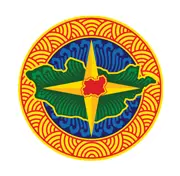
Introduction
Total page views : 1
News
See all
About Us
GEOGRAPHY
Central Province is located in the east-central part of Mongolia, covering an area of 74,042.37 km². It surrounds the Ulaanbaatar capital in the middle, and borders Khentii, Govisumber, Dundgov, Overkhangai, Bulgan, and Selenge on the other sides.
Land formation
The average elevation is 1200-1500 m above sea level. It has a mountainous surface, such as the Khenti ridge, the Zaamar ridge, the Zorgol Khairkhan ridge, and the Hustain ridge. There are mountains like Asralt Khairkhan (2800 m), Bogd Khan and Bathaan.
16.4 percent of the territory is covered by forests and 36.5 percent by fields.
Geographically, it is included in Khangai, Khent's mountainous regions, Eastern Mongolia.
The wide mountain valleys in the northern part of the country have brown soil suitable for agriculture, and the southern part is a plain with rolling hills.
River
There are more than 30 rivers, big and small, including Kherlen and Tuul. There are lakes in Janchivlan, Tsaidam and Tsahir.
Animals and plants
In the eastern and western parts of the province, the brown and light brown soils of the steppe are spread, and in the northeastern part, the dark soils of the estuary, mountain forests, and gray soils of the meadows are spread.
In Khangai and Khenti mountains, there are various trees such as cedar, larch, poplar, willow, pine, yashil, yargai, fruits such as gorse, moil, gooseberry, dog's beak, onions, kumol, leek, mangir, khaliar, mustard, and mushrooms. Herbs, licorice, rare and rare medicinal plants such as sea buckthorn, badana, five branches, marjoram, and golden weld will grow.
In Central Province, there are 16 species of protected animals such as deer, elk, wild sheep, sable, and swans, as well as more than 30 species of animals and birds that are important for hunting, such as squirrels, marmots, foxes, cormorants, pigs, bears, and lynxes.
HISTORY
The territory of the central province was the territory of Tusheet Khan province of Khalkh during the period of Manchu rule and Bogd Khanate of Mongolia.
After the independence of Mongolia, in October 1923, it was called "Bogd Khan Mountain Province" and the administrative center was located in the Lun Sum area of the Central Province.
In 1923, Bogd Khan mountain province included 21 counties, 82 sums, and 1227 tens.
In 1931, the name of the province was changed to "Central". From time to time, the central province gave sums to the neighboring provinces. In 1933, there were 36 sums and 312 teams, but in 1944, only 22 sums were left.
From 1931 to 1942, the administrative center was in Ulaanbaatar, and in 1942, Bogd Khan moved to a cool terrace next to the Manzushir Khutagt Mosque, at the mouth of the Hundred Tree Mountain. In 1966, it received the title of Zuunmod city.[9]
Since 1992, Central Province has 27 sums. It simply includes Zuunmod City or Zuunmod Sum in the administrative name.
THE GOVERNOR
The following people worked as the head of the central province:
1. Darkhan Chin van Puntsagdorj (1923-1924) 14. Badamjav of Yanjiv (1954-1959)
2. Sanjaajamts of Nagnaadorji (1924-1932) 15. Jamsran of Tsenjav (1959-1974)
3. Shagdar of Godong (1932-1934) 16. Dashdemberel of Chowdorong (1974-1985)
4. Tserennadmid of Jadamba (1935-1938) 17. Gombojav of Jamb (1985-1991)
5. Dolsuren's Ulziit (1938-1940) 18. Sanda's Gonchig (1991-1996)
6. Sonompil's Saturday (1940-1942) 19. Purevdorji Tseren /duty./ (1996-1997)
7. Luvsangombo of Puntza (1942-1944) 20. Batbold of Tsegmed (1997-2000)
8. Gombosuren of Tseveen (1944-1945) 21. Mendbileg of Mondoon (2000-2004)
9. Adya of Chimedbaljir (1945-1946) 22. Enhbat of Tsedevdorji (2004-2012)
10. Tsagany Yondonjamts (1946-1947) 23. Dorjin Bayarbat (2012-2016)
11. Tuvden of Sede (1947-1951) 24. Batjargal of Jigjid (2016-2020)
12. Jamyaandampil of Zandraa (1951-1952) 25. Munkhbaatar of Demberel (2020- )
13. Jugder's Choidog (1952-1954)
Contact Us
SUB ORGANIZATIONS
RELATED ORGANIZATIONS
ТӨРИЙН ҮЙЛЧИЛГЭЭ
Subscribe
If you want to receive new updates regularly without delay, please enter your email here to subscribe.

